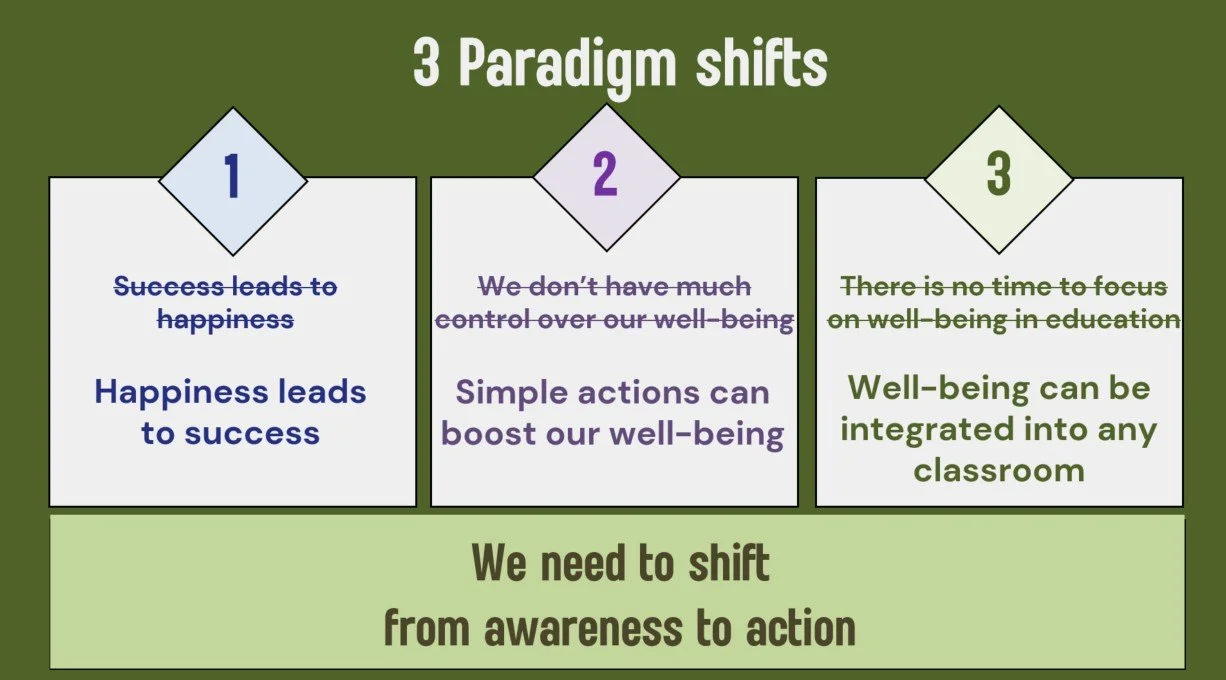From Awareness to Action: Rethinking Happiness in Education
Insights and Summary from Speaking at the Mindful Library Opening
I was honored to be a guest speaker at the opening of the Mindful Library at Vrije Universiteit Amsterdam on February 27, 2024—a space designed to support student well-being and mindfulness. This initiative, led by David Oldenhof, Michèle Meijer, and their colleagues, provides an environment where students can cultivate mental well-being and deepen their mindfulness practices. The opening event, organized with the help of Marc Lamain, set the stage for meaningful discussions on happiness, education, and well-being.
During my talk, "From Awareness to Action: The Paradigm Shift We Need to Boost Student Happiness," I challenged three common assumptions about happiness and proposed actionable shifts to create a lasting impact in educational settings.
Paradigm Shift 1: Happiness Fuels Success, Not the Other Way Around
A common belief is that success leads to happiness—that achieving goals will make us happy. However, research shows the opposite: happiness leads to success. When people are in a positive state of mind, their brains perform better, making them more creative, productive, and resilient. Educators and institutions should focus on fostering happiness as a foundation for student achievement.
Paradigm Shift 2: Simple Actions Can Boost Well-Being
Many assume that happiness is largely determined by external circumstances. In reality, small, intentional actions can significantly improve well-being. Science-backed strategies include:
✔ Practicing gratitude
✔ Building strong social connections
✔ Engaging in light exercise
✔ Incorporating mindfulness
These are just a few examples—there are many more strategies that can be adapted to fit different individuals and contexts. There is no one-size-fits-all approach, so students should explore and personalize their well-being strategies.
Paradigm Shift 3: Well-Being Can Be Integrated into Any Classroom
Another misconception is that there’s no time to focus on well-being in education. However, small, time-efficient adjustments can make a big difference, such as:
✔ Creating a safe and inclusive learning environment
✔ Encouraging social connection activities
✔ Providing opportunities for self-expression
✔ Offering flexibility and support
Educators don’t need to overhaul their teaching methods—simple changes can foster a positive and engaged learning experience.
Bringing Mindfulness into Education
Mindfulness is a powerful tool for boosting well-being. In previous projects, we introduced students to mindfulness by:
🔹 Encouraging mindfulness exercises outside the classroom
🔹 Breaking down misconceptions about mindfulness
🔹 Starting class with a one-minute breathing exercise
Now, with the Mindful Library, students have a dedicated space to explore these practices further. However, to create real change, we must shift from awareness to action.
A Space for Growth and Connection
I hope students will frequent the Mindful Library to deepen their mindfulness practices and build meaningful connections. As a first initiative, students from The Happiness Experiment course have used this space to design and facilitate a workshop introducing beginners to mindfulness. This hands-on approach not only strengthens their understanding but also allows them to share knowledge with their peers.
Let’s continue fostering awareness and driving real, positive change—one small action at a time.
🚀 Want to bring well-being strategies into your team or classroom? Let's connect!








